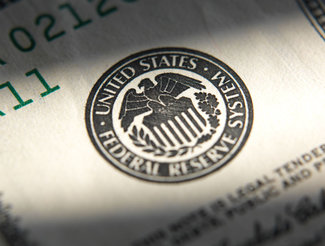Monetary policy is one of those topics that only a handful of people ever devote much time to studying. Most people ignore central banks during good times and beg them to intervene during bad times. During the worst part of the financial crisis Wall Street clamored for more assistance from the Federal Reserve. They got that assistance in spades, with trillions of dollars of new money flooding the economy. Now that things seem to have gotten better, and stock markets have been breaking new highs, everyone seems to have forgotten about the Fed. But the Fed, and other central banks, continue to affect the economy in critical ways. Investors who neglect to take into account the actions of central banks could put their assets in peril.
By now everyone seems to be aware of the Fed’s intent on both raising its target federal funds rate and reducing the size of its balance sheet. But the Fed’s balance sheet won’t return to its pre-crisis size anytime soon. This year the Fed’s balance sheet has declined by a little under 3%, not a huge amount by any means. The balance sheet remains excessively bloated, at over $4.3 trillion. Most of the decrease comes in the way of reduced Treasury security holdings, with mortgage-backed security (MBS) holdings also declining, as well as smaller central bank liquidity swaps.
While the Fed wants to act cautiously and not spook markets, its tighter monetary policy still remains unprecedentedly loose. Central banks around the world own around 20% of their governments’ total debt issuance. That is a massive intervention into financial markets that has propped up bond prices and driven down yields. Unwinding that position won’t happen overnight, but as it occurs bond prices will sink and yields will rise. For an economy that has experienced a decade of ultra-low interest rates (and many years of low interest rates before the financial crisis), the return to normalcy will come as quite a shock, and stock markets will suffer as corporations have to pay more to service their debt.
Central banks have quite literally been the glue that has held the world economy together over the past decade. But don’t get the impression that that’s a good thing. Markets have become so dependent on central bank intervention that they have forgotten how to function in the absence of easy money. The last major spike in bond rates occurred in the early 1980s, and most investors, traders, and analysts have no firsthand experience of that type of environment. We’re in for a very rough ride now that interest rates are rising again, and anything could happen.
The prospects of another financial crisis grow all the time, despite the Fed’s insistence that it’s not worried about financial stability and that there are only a few pockets of elevated asset prices. Another crisis would of course likely bring the Fed back to the table for more quantitative easing, eroding the dollar’s value even further and hiking the risk of hyperinflation.
We’re at an inflection point right now, a point at which it’s becoming clear that markets are in for a downturn. Investors who work to safeguard their assets now can protect themselves in advance of a coming market correction. Ultimately your investment decision comes down to who you trust. If you trust the Fed and the world’s central banks to do the right thing and keep the economy stable, go ahead and stay invested in stocks and bonds. But if you don’t trust the central banks then you need to diversify your portfolio and reduce your exposure to financial markets, and there’s no better way to do that than by investing in gold.
This article was originally posted on Goldco.




